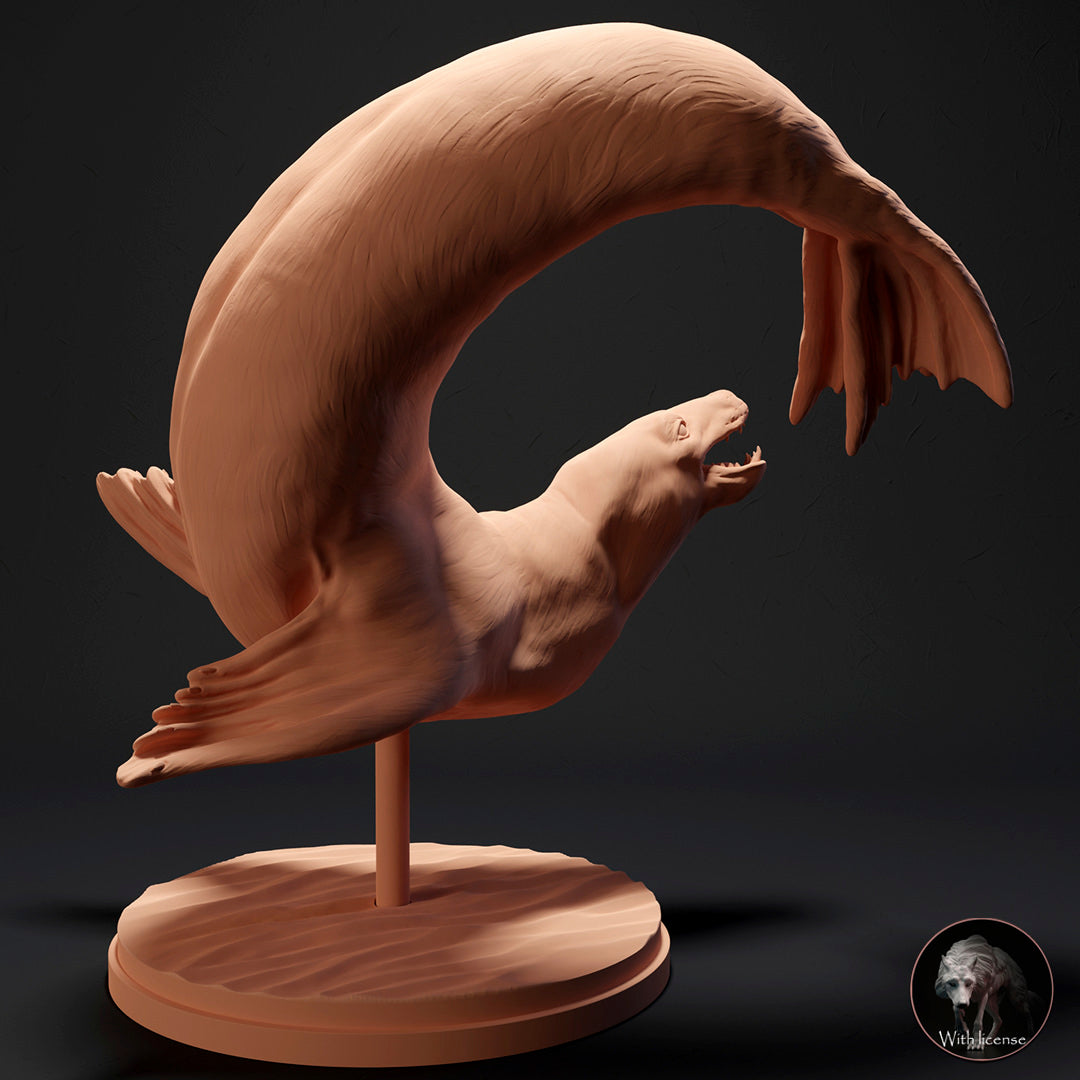


Leopard Seal
Do you want another scale?
Contact us and we will make it possible!
How will you receive your replica?
In the unprimed and primed variants, you will receive the complete replicas except for the large models, where you will receive an assembly kit.
In the hand-painted variant, the replicas will be delivered complete.
How does the painting service work?
We created a private chat for you where you will have direct communication with our painter , being able to choose your preferred color schemes and follow the hand painting process closely.
Pairs well with

Leopard Seal
If you have any questions, you are always welcome to contact us. We'll get back to you as soon as possible, within 24 hours on weekdays.
Shipping Information
Visit our shipping policy page to find all the information.
Customer Support
Give us a few details and we’ll offer the best solution. Connect by chat or email.
We are available 24/7.
FAQ’s
Visit our FAQ's page to find answers to common questions.
Contact Us
We'd love to hear from you. We are here to help. Visit our contact page to send us a message.
Product details
The leopard seal, also known as the sea leopard, is a species of marine mammal belonging to the phocid family. It is one of the largest seal species and is easily recognizable by its spotted fur, which gives it its name due to its resemblance to the fur of a terrestrial leopard. Here is an overview of this impressive species:
- Size and appearance: The leopard seal is a robust and slender species that can measure between 2.4 and 3.5 meters in length and weigh between 200 and 600 kilograms. Males are generally larger than females. Their body is elongated and aerodynamic, which allows them to move with agility in the water. Their fur is dark gray or black on top and white below, and covered in irregular spots, similar to the spots of a terrestrial leopard, providing them with excellent camouflage in the wild.
- Distribution and habitat: The leopard seal is found in cold, subantarctic waters around the Southern Ocean. They can be found in various regions, including the Falkland Islands, the South Georgia Islands, the Antarctic Peninsula, and other sub-Antarctic islands. They prefer coastal areas and floating ice shelves where they can rest and raise their young.
- Diet: They are carnivorous and their diet is mainly based on fish, cephalopods (such as squid) and krill, which are small marine crustaceans. They are agile and fast hunters in the water, using their streamlined body to easily swim and capture their prey.
- Behavior: Leopard seals are solitary animals in most cases. They spend most of their lives in the sea, but they are also capable of moving on dry land. They are excellent swimmers and can dive to considerable depths in search of food, sometimes reaching depths of more than 100 meters and remaining underwater for long periods.
- Breeding: The breeding season for leopard seals usually occurs in the austral spring. Females give birth to a single young on the ice or on dry land. After a period of lactation, the mother leaves her young to search for food in the sea, returning periodically to feed her. The calves are vulnerable during this stage and are exposed to predators such as killer whales and sharks until they gain the strength and skills to survive on their own.
Approximate measurements of the Leopard Seal:
- 1:24 scale - 73mm
- Acrylic supports
Information about aftershocks
Collector's item ; Hyper-realistic replica, highly detailed and with a high degree of scientific precision.
Made to scale, prototyped in resin and with a scenic base in most of the models offered. If you like miniatures, both for collecting and for painting, we offer you a wide variety of scale replicas; All of them related to dinosaurs, extinct prehistoric fauna and current fauna.
So if you love dinosaurs and animals as much as we do, this is your favorite store to collect and paint them :)
We are authorized distributors of all the replicas and figures we offer. We use 3D printers with 8K - 14K resolution, and high-quality resins with additives to improve hardness and flexibility, thus offering replicas of impeccable quality.
Different scales will be used to make the replicas (depending on the size of the species), although we are open to making other suggested scales upon request as long as they fit in our printing trays, for which you will have to contact us via email and request the required size.
Replicas are supplied with the option of airbrush priming in dark grey. If you require another colour, please let us know which one you prefer in the box with special instructions for the seller. Without priming, we do not guarantee that the resin will accept paint.
We also offer the option of choosing a professionally painted replica, which is agreed upon throughout its development with the painter, through a private chat available.
Complete replica (one piece): We supply complete replicas in those models that are small, and models that are medium, large or not very bulky, will have the prerogative of being presented as a complete replica or assembly kit as the case may be.
Complete replicas will be supplied separately from their base.
Replica assembly kit: We supply replicas whose models are large, very large or bulky, only with this option.
The indicated replicas (generally composed of base, head, body and tail) will come prepared for the subsequent assembly that will be required by the client, by sanding, putty, adhesive or technique chosen by the client.
All replicas are thoroughly inspected before shipping and will be carefully packaged to prevent damage during transport.
Information about the models
The poses of the models aim to represent each character in the most scientifically viable way, thus revealing the life and customs of prehistoric and modern fauna.
Each character has its own personality and develops in different life scenarios; birth, adolescence and play, hunting, feeding, fighting, courtship, death and many other scenes from their daily life, always from the creative perspective of their designers.
Handmade
All orders are individually prepared on the cutter for subsequent prototyping, obtaining a resin part that will require post-processing by manual and ultrasonic cleaning, support removal, ultraviolet curing, labeling and packaging.

We are authorized distributors
We offer both our own physical replicas and those that have been modeled by many of the best 3D designers, in order to offer you the greatest possible variety.
Frequently Asked Questions
If you have any questions about products, orders or shipping, please read our FAQ page to learn more.
